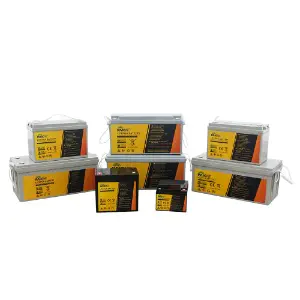In the quest for sustainable and efficient energy storage solutions, the Lithium Iron Phosphate Battery has become a prominent contender due to its stable performance and safety features. However, when considering the Lithium Iron Phosphate Battery's energy density, it is essential to understand how this metric influences its suitability for various applications. Energy density, or the amount of energy that can be stored per unit of weight or volume, is a critical factor in determining the practicality of batteries for use in electric vehicles, grid storage, and portable electronics.

The Lithium Iron Phosphate Battery's energy density is often compared to other lithium-ion battery chemistries, such as Lithium Cobalt Oxide or Lithium Nickel Manganese Cobalt Oxide. While these chemistries may offer higher energy densities, the Lithium Iron Phosphate Battery has a distinct advantage in terms of safety and longevity. The energy density of a Lithium Iron Phosphate Battery is typically around 100-120 Wh/kg, which is lower than some other lithium-ion options but still competitive in many applications.
One of the key benefits of the Lithium Iron Phosphate Battery is its flat voltage plateau, which allows for more accurate state-of-charge calculations and can cause more efficient energy use. This characteristic, combined with its energy density, makes it an attractive option for applications where a balance between energy storage and safety is required. The stability of the Lithium Iron Phosphate Battery's structure also contributes to its lower risk of thermal runaway, a dangerous condition that can cause battery fires or explosions in some high-energy-density batteries.
When considering the Lithium Iron Phosphate Battery's energy density in the context of electric vehicles, it's important to weigh the benefits of safety and longevity against the need for range. While vehicles powered by lithium-ion phosphate Batteries may not have the same range as those with higher energy density batteries, the reduced risk of battery failure and the longer lifespan of the batteries can offset these limitations for many drivers.
In grid storage applications, the Lithium Iron Phosphate Battery's energy density is less of a concern than its ability to perform well over many cycles and its resistance to degradation. The energy density of these batteries is sufficient for grid storage needs, and their reliability and safety make them a popular choice for large-scale energy storage projects.
For portable electronics, the Lithium Iron Phosphate Battery's energy density is often more than adequate, as these devices typically do not require extremely high energy storage capacities. The durability and safety of these batteries make them a good choice for consumer electronics, where the risk of battery failure can have significant consequences.
In conclusion, the energy density of lithium-ion batteries, while not high among lithium-ion options, is still competitive in many applications due to the balance it provides between energy storage, safety, and longevity. As technology advances and the demand for energy storage solutions grows, the Lithium Iron Phosphate Battery will continue to be a strong contender in the market, particularly in applications where safety and reliability are paramount.
Get to know quickly
We are a professional lithium iron phosphate battery, solar energy storage system, industrial and commercial energy storage system manufacturer.
 +86-133 3592 3377
+86-133 3592 3377
 +86-4008833583
+86-4008833583
 Email: [email protected]
Email: [email protected]

Copyright © Zhejiang Paichen Energy Storage Group Co., Ltd All Rights Reserved.
Battery Energy System Manufacturer
